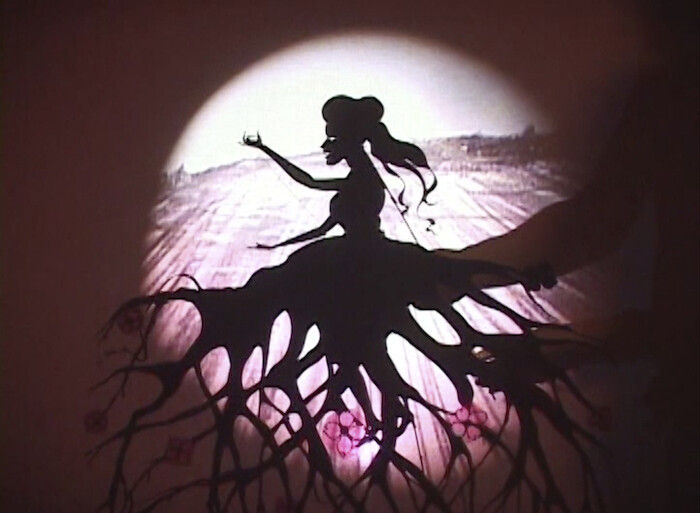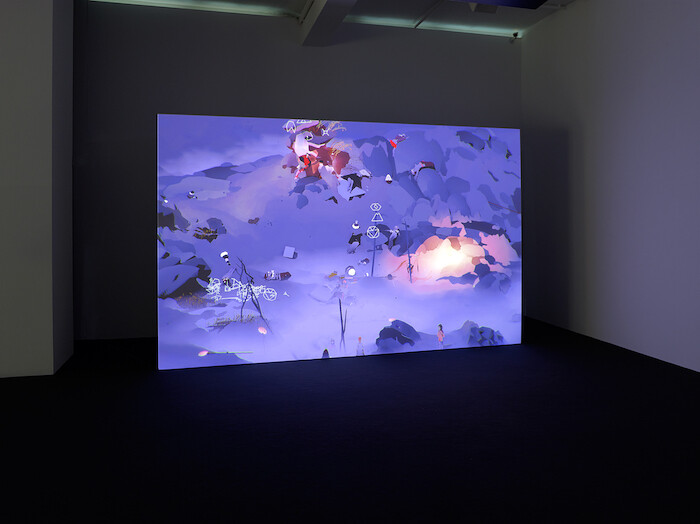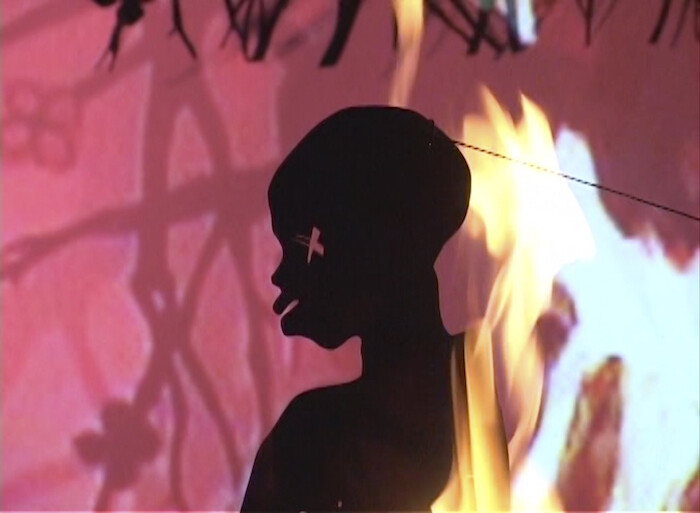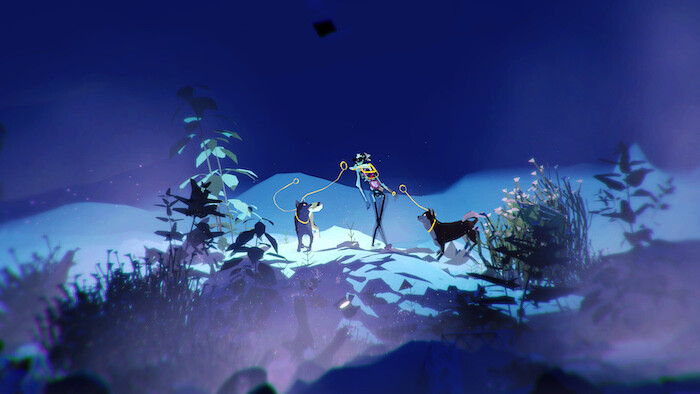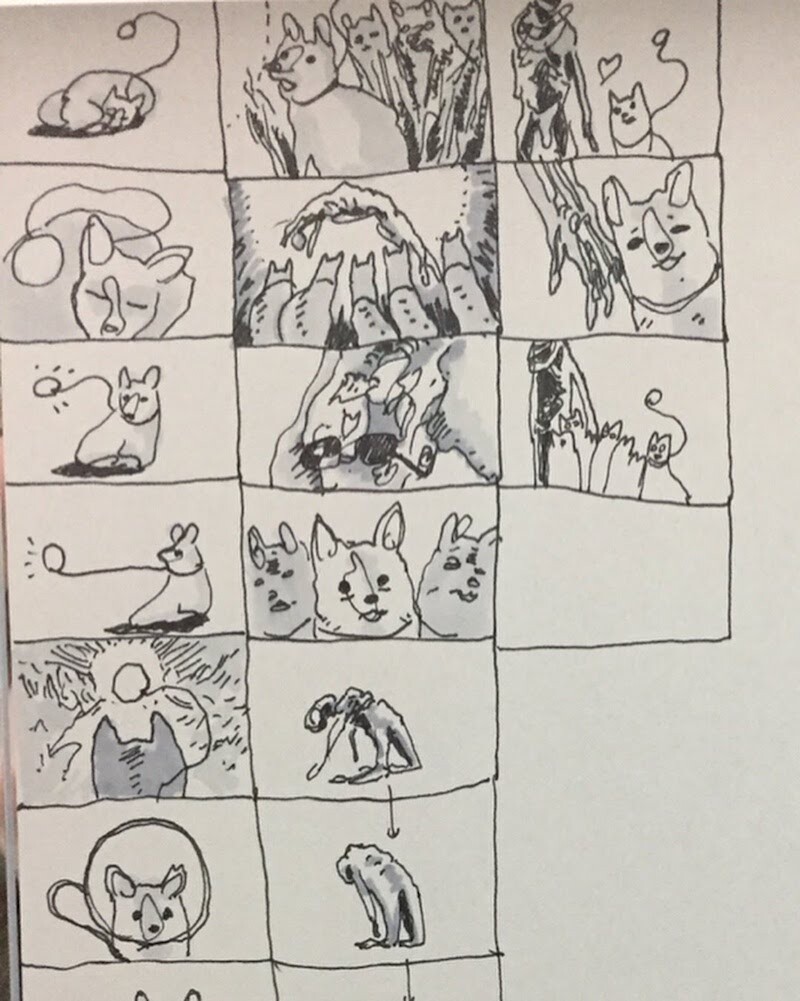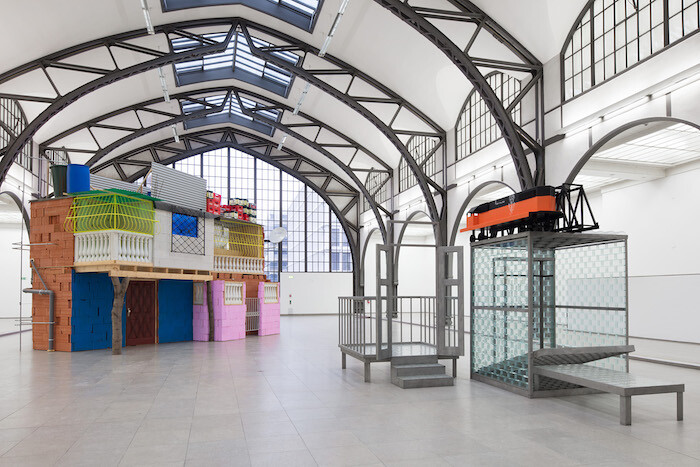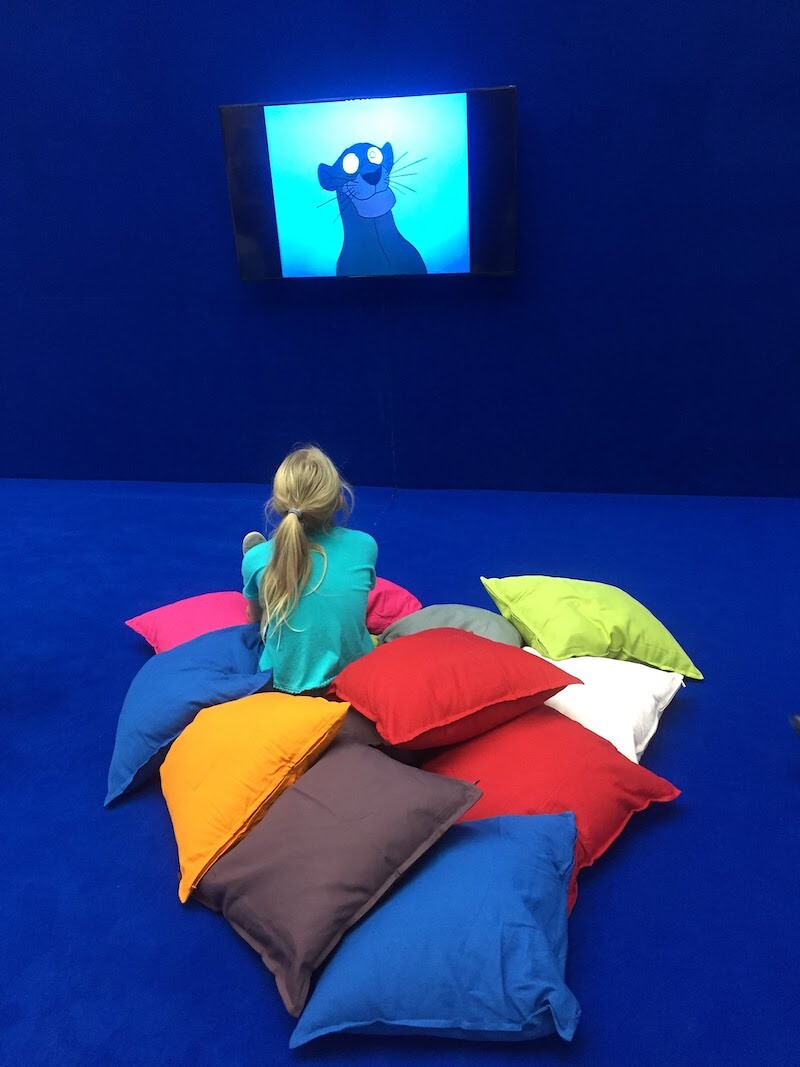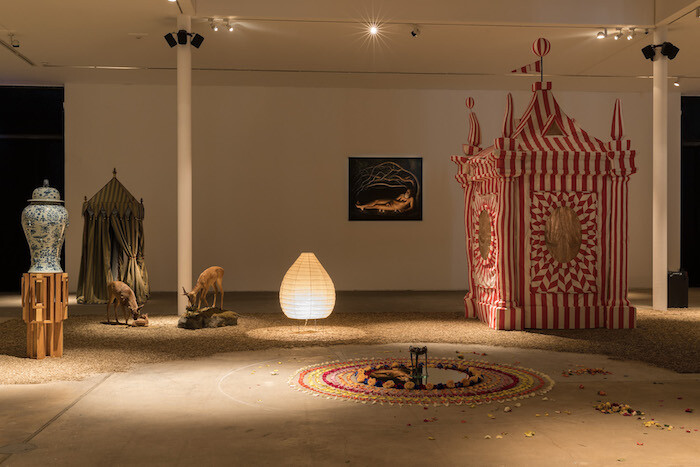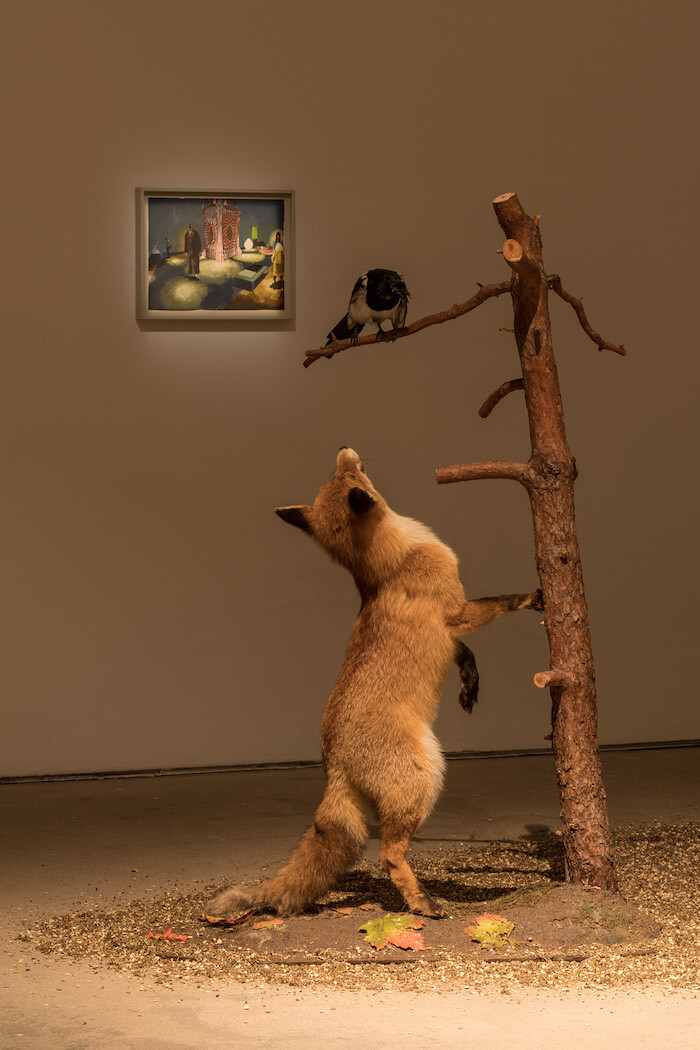There are occasions in which the multifaceted shape of time becomes obvious. Occasions in which the concentration of similar initiatives, aimed at similar audiences and presenting similar outcomes, attest to the different moments in which organizations, individuals, and their mentalities are situated: how, despite coexisting simultaneously, collective mindsets aren’t contemporary to one another. Aimed at showing trendsetting cultural production and hosted in such a temporally dysfunctional city as Berlin—located in a permanent identity crisis between its haunting past and its daunting ahistorical future—the Gallery Weekend provides a good example of the heterogeneous configuration of this non-time called the present and how art participates in it. The present seems to be constituted by retrospective and anticipatory instances and institutions: individuals, objects, and imaginaries that live in parallel timeframes, either looking back or forward.
Sometimes, these temporal gaps are so large that different centuries span across the more than 50 exhibitions that opened during the Gallery Weekend. While some address the events and concerns that shaped the twentieth century, others look ahead, imagining the future. The moving image-based shows of two North American artists—Kara Walker and Ian Cheng, presented respectively at Sprüth Magers gallery and at the Berlin venue of the Julia Stoschek Collection—offer an outstanding reflection on the chronological poles of cinema. While Walker explores the legacy of the shadow puppet theaters of the eighteenth century, which preceded the invention of cinema, Cheng contributes to the definition of “post-cinema”—a cinema full of life despite lacking camera, film, narrative, or even beginning or end. In doing so, the work of the two artists stands over 200 years apart, yet they share a remarkably similar visual language. In both exhibitions, viewers come across different sets of figures with clumsy, uncontrollable movements, trembling and jerking while interacting with other unruly characters. They move in outlandish settings: abstract landscapes in constant transformation, whose warm, alluring colors decline in fluid hues and beautifully balanced chiaroscuro effects. Despite the painterly quality of the environments they create, an inherent violence traverses Walker and Cheng’s worlds.
Projected on a loop in a black box, Walker’s video Fall Frum Grace, Miss Pipi’s Blue Tale (2011) depicts the most bestial side of humanity. White, aquiline-nosed silhouettes beat, castrate, and finally murder a black counterpart. No redemption or emancipation is possible. Every 17 minutes the same individual dies, again, and again, and again. Cheng’s “Emissaries” trilogy of live simulations (2015–17), made using a video game engine, envisages a post-human universe in which machine intelligence and agency permanently reshape the configurations of the ecologies they propitiate. Inhabiting forms—objects, plants, humanoids, animals—constantly make voluntary decisions that unfold in unpredictable situations and consequences. If Jane Goodall’s discovery of tool use by chimpanzees in Gombe, Tanzania, prompted the scientific community of the early 1960s to redefine tool, redefine humans, or accept chimpanzees as humans,1 Ian Cheng’s live simulations prompt the late 2010s to redefine will, redefine life, or accept machines as living entities. The future is dense in Cheng’s exhibition, among the most visionary solo shows of the year so far.
Equally outlandish—if largely due to its overwhelming size—is Hamburger Bahnhof’s “Hello World. Revising a Collection.” This ambitious, biennial-sized exhibition, developed by Udo Kittelmann with a team of 10 curators, features more than 250 artists and 500 artworks divided onto a series of 13 chapters. The project looks at the assets of the Nationalgalerie of the Staatliche Museen zu Berlin (and the different museums it comprises) and the Stiftung Preussischer Kulturbesitz to revise and rewrite the concept of the collection, widening it toward a more horizontal, transcultural treatment of non-Western legacies. Despite the unevenness of its curatorial proposals and the missed opportunity to engage in current debates surrounding the decolonization of museums, “Hello World” is elegantly displayed, well articulated and researched, thus too serious to fail. The section of “Hello World” curated by Melanie Roumiguière, “Arte Popular, Surrealism and Emotional Architecture” offers a particularly striking narrative. Featuring works by Leonora Carrington, Mariana Castillo Deball, Mario García Torres, and Tina Modotti (among many others) alongside historical and contemporary ethnographic objects from Mexico, it unveils the non-European roots of Surrealism in an emotionally charged setting. Profusely documented, and presenting a panoply of more and less recognized artists and collectives from socialist Europe, Zdenka Badovinac’s curated section “Sites of Sustainability—Pavilions, Manifestos and Crypts” observes how the transition from the making of artistic objects to process-based, collaborative approaches to art was fundamental to a critique of the state-sanctioned model of cultural production in socialist Europe between the 1950s and ’80s. In the main hall, Kittelmann curated “Agora,” consists of a set of monumental installations that open and close the visit. Despite comprising the least successful chapter of the exhibition, it features Pierre Bismuth’s Jungle Book Project (2002), a re-edit of Walt Disney’s 1967 movie in which each character speaks a different language and whose says candid and humorous simplicity proposes a concentrated version of the multiculturalist and revisionist proposals of the show.
AA Bronson’s Garten der Lüste, a five-day collaborative live environment at the KunstWerke (KW), is impressively out of time. Borrowing its title from Hieronymus Bosch’s painting The Garden of Earthly Delights (circa 1500), the project makes an excellent spatial occupation of KW’s lower ground floor. Bronson’s installation of four tents (Folly [2015/16], Tent for Healing [2013], Treehouse [2015], and Cabine [2008]) dotted with taxidermy fawns, foxes, and birds is poised between a theater, a garden, and a bestiary—Foucauldian heterotopias that echo the research behind Chris Dercon and Rudiger Schöttle’s inspiring 1989 exhibition “Theatergarden Bestiarium” [Theatre, Garden, Bestiary]. (A reminder that, despite everything, Dercon has a remarkable curatorial career.) Featuring healing procedures and spiritual moments—such as the Bronson-led, one-on-one “healing sessions” that took place in Tent for Healing—and brought together by Ebe Oke’s dark cinematic sound piece FIELD (2015), the space accumulate multiple functions. Seemingly devoted to the perpetual accumulation of time, Garten der Lüste induces viewers into willing experiences of trance and hallucination.
“More than Ever,” Leiko Ikemura’s solo exhibition at Kewenig gallery, is a grand counterpoint to Bronson’s healing circus—though not because it can easily be framed within the defining jargon of art made by women (“delicate,” “fragile,” “diaphanous,” and so on). A striking spirituality emanates from her sculptures and paintings. An almost-contemporary of Bronson, Ikemura addresses another form of ritual, namely therianthropy: the mythological ability of humans to shapeshift into other animals. Her figures and environments are always in transition. Hase-Frau [Hare-Woman, 1990/2016], for instance, is a duck-rabbit version of an in-between being, a werehare whose raised human arms turn into long animal ears, and vice-versa, showing how even a bronze sculpture can exist in a process of transformation, of becoming other, of standing across hybrid representations. Ikemura’s series of ceramic heads (such as Kitsune Blue [2011], Sleeping Forest [2017], or Trees on Head Smiling [2017]) are realistic, but not entirely human, faces that appear to be sleeping upon the tall, round pedestals that hold them. Presented together, they graciously acknowledge the atemporal classicism of western sculpture while bending it toward a more modern mode of display. Using pedestals as pillows, these sleeping heads ignore the attempts at monumentalization operated by the exhibitionary system. They exist out of time, writing a canon of their own, and evidencing the transformative nature of all things. Even across plural times, and in such fast and furious environment, the calm dream of better times is always possible.
The original statement, telegrammed to Goodall by her supervisor, paleoanthropologist Louis Leakey, was: “now we must redefine tool, redefine Man, or accept chimpanzees as humans,” in Jane Goodall, “Learning from the chimpanzees: A message humans can understand,” Science no. 282, 1998: 2184–2185.

